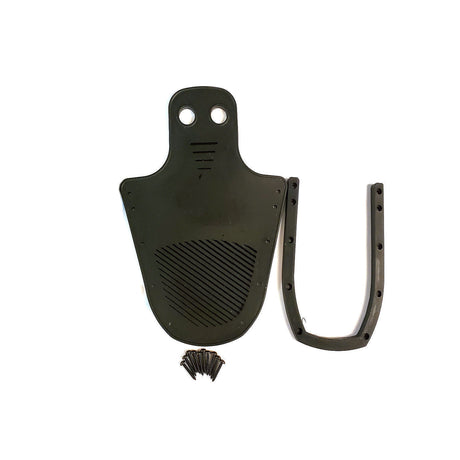We all enjoy riding boat tubes on the local lake, as we have for decades -- flips, turns, pops off the wake, and inevitable wipe-outs included. None of this is new.
But with the advent of social media, we've all seen one or two TikTok videos of a seemingly impossible feat: A towed boat tube gliding precariously above the water, floating through the air. Riders are seen holding fast with white knuckles and bright smiles.
Around the mid 2000s, this phenomenon was introduced by design: Airborne boat tubes -- also called kit tubes -- were purpose-built to generate lift and exit the water when towed at speed. These were made famous by the Manta Ray Flying Tube, seen in the photo above.
This begs the question:
Is it really safe to get airborne with a tube?

Emphatically speaking, no. Never. Although it's OK to hop across the water -- like the rider above -- it's never safe to make a tube go et airborne.
It is coincidence that towed tubes happen to have some aerodynamics built into their design. This naturally allows them to generate some lift at high speed.
With the right circumstances, it's possible to get some surprising air, even with a regular tube.
But going fast and getting airborne with any tube can be deadly. The infamous Manta Ray tube was allegedly responsible for causing more than 80 serious injuries and 3 deaths just months after it was first sold.
The tube has since been banned by most states and waterways in the U.S. All units were recalled by the manufacturer.
"But how is it so dangerous?" You may ask. Here's how:
Inflatable Tubes Are Prone to Flipping

Towed tubes like to flip upside down when they become unstable. You've seen plenty of wipe-out videos that prove this point. A tube's inflatable construction, coupled with the riders' high centers of gravity, makes it top-heavy.
Top-heavy things want to shift their gravity to the lowest possible point. So, when you wipe out on a tube, you tend to flip and wind up underneath the vessel.
This is no different when you're miraculously -- and dangerously -- gliding through the air. It is actually more likely you'll flip while airborne, resulting in a dangerous free fall back into the water.
Tow Your Tubes at 25 MPH (Or Less)
The solution to staying safe is simple: Don't go too fast. This is especially true with children -- they're smaller and lighter, and are more likely to catch air than one or two adults.
No tube should be towed faster than 25 MPH. Speeds should be reduced if waters are choppy, or if there are high winds. Going faster than this can cause injuries even if you're atop the water. High speeds can also damage your tube, the line, and the pylon or tower securing the tube and line to your boat.
New to boating and tubing? Read our safety guide. It covers the do's and dont's of tubing.












